
Georg Gatsas, Five Points
Softcover, 48 pp., offset 4/1, 195 x 255 mm
Edition of 1000
ISBN 978-3-905714-72-2
Published by Nieves
$24.00 ·
What makes Georg Gatsas’ work particularly significant is that it is a historical document. This approach puts the art back into artifact. Now we are looking at his images much in the way others must have looked at images of people in the same places over one hundred years ago. I enjoy imagining someone like Georg Gatsas in one hundred years looking at the book you are reading now, I wonder what they might have to say or might be able to learn about these places, people and things.
—James Fuentes
Art, Culture, Distribution, Georg Gatsas, James Fuentes, Nieves, Photography

Ingo Giezendanner, Baku & Back
Softcover, 176 pp., offset 1/1, 132 x 180 mm
Edition of 1000
ISBN 978-3-905714-75-3
Published by Nieves
$28.00 · out of stock
This summer, inspired by a cultural exchange program with the Caucasus,
I travelled by land from Zurich to Baku and back. My objective was to document the journey with pen on paper. Though the culture exchange eventually did fail, the experience was intoxicating to my pen and I. The drawings capture the gradual change of scenes from Switzerland through the former Yugoslavian states, Bulgaria, Turkey and Georgia before finally arriving in Azerbaijan (to travel back again just see the book backwards). This is my statement to go out, see the world and avoid airplanes. Take your time and enjoy the view on your train ride.
—Ingo Giezendanner
Art, Distribution, Illustration, Ingo Giezendanner, Nieves
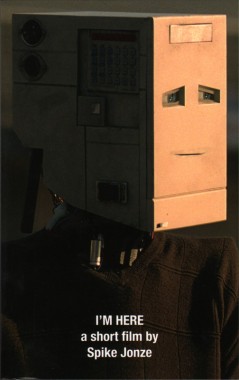
Spike Jonze, I’m Here
Softcover, 48 pp., offset 4/4, 112 x 178 mm
Edition of 1000
ISBN 978-3-905714-77-7
Published by Nieves
$18.00 ·
Spike Jonze’s new half-hour short film titled I’m Here is a robot love story celebrating a life enriched by creativity. The movie is set in contemporary Los Angeles, where life moves at a seemingly regular pace with the exception of a certain amount of robot residents who live among the population. A male robot librarian lives a solitary and methodical life — devoid of creativity, joy and passion — until he meets an adventurous and free spirited female robot.
Distribution, Film, Nieves, Spike Jonze
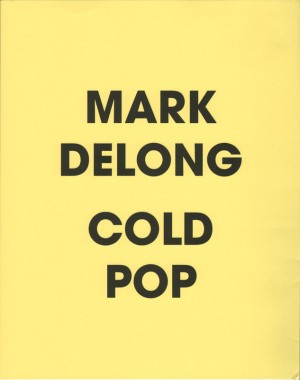
Mark DeLong, Cold Pop
Softcover, 100 pp., offset 4/1, 7.75 x 9.75 inches
Edition of 1000
ISBN 978-0-9825936-0-8
Published by Seems
$24.00 ·
Cold Pop features three separate but related bodies of work by artist Mark DeLong: a series of six panel cartoons, a selection of ceramics, and graphite drawings. Delong combines dreamlike associations with movie and television references that, though tongue-in-cheek and humorous, border on the horrific. The vast network of associations — anthropomorphized raisins, rabbits, and and cats — mingle in an absured and anxiety-laden world where figures wrestle with their neuroses, boredom, unrequited lust, and romantic rejection.
Art, Distribution, Mark DeLong, Seems
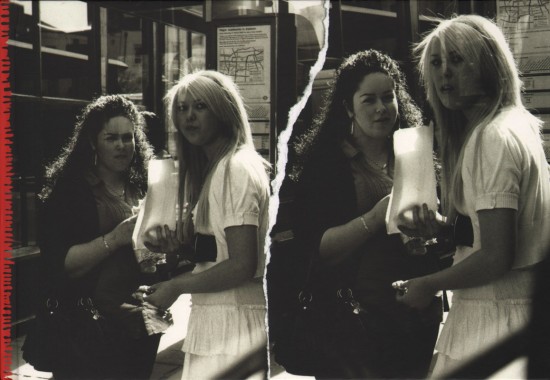
Ed Templeton, The Seconds Pass
Hardcover, 154 pp., offset 4/4, 11 x 7.75 inches
Edition of 1000
ISBN 978-0-9825936-1-5
Published by Seems
$52.00 ·
There is a scribble of asphalt and meandering ribbons of concrete tangled all over North America in a contiguous line of material that connects each of us to whomever else is also in contact. I sometimes marvel at this, walking from my front door and standing on the asphalt looking down at its grimy blackness, wishing I could rest my ear down on it and hear everything like the Indians in an old western film. The pavement I’m standing on is connected to other pavement, concrete, or steel to almost anywhere I can think of. Certainly everywhere you can drive to. Someone in Burnt Church, Tennessee is standing on gravel that is connected by touch to my street, just like someone is in Halifax, Nova Scotia. I can be in New York City in 3 days from my home in the suburban sprawl of Orange County, California without ever touching the earth.
—Ed Templeton
Art, Culture, Distribution, Ed Templeton, Photography, Seems

Sandy Kim, Sandy Kim
Softcover, 80 pp., offset 4/4, 10 x 8 inches
Edition of 500
ISBN 978-0-615-32175-2
Published by Unpiano Books
$20.00 ·
Sandy Kim utilizes a highly self-referential style of photography which peers into the tiny microcosm of one woman’s life. Reminiscent of the casual documentary style popularized by Nan Goldin in the Eighties, the photographs in Sandy Kim highlight her life at one particular moment and the people who are revolving in and around it.
—Jesse Pollock
Sandy Kim is pretty short, has a ton of hair, a broken orange backpack and always loses her camera. When that happens, she just gets a disposable and keeps taking pictures. It’s this lackadaisical tenacity that translates into her photos, how they always looked kind of busted but warmly worn in and comfortable. Like many young photographers, she’s made her friends her subjects — landscapes of young women, tattoos and San Francisco fog. But she never lays a soft hand, as if anything flattering in her photos is accidental. That’s not to say her photos are purposefully unappealing or harsh, but simply that they are so often just really gross — honest portraits of much of her daily life. But Sandy’s grossness is completely malleable, sometimes funny, sometimes horrific, sometimes unbelievably lush. Sandy is such a brazen and unafraid woman and that power continually streams strongly in her photos, across all spectrums of feeling and subject. Throughout Sandy Kim, there is a lot of blood, but that blood is never the same — blood on her sheets after sex, blood from a dead body covered in a sterile white sheet, blood on the hand of a friend after an unknown accident. He’s smiling, looking straight at the camera, at Sandy. They both know it will heal.
—Matthew Schnipper
Culture, Distribution, Jesse Pollock, Mark Kaiser, Matthew Schnipper, Nan Goldin, Photography, Sandy Kim, Unpiano Books
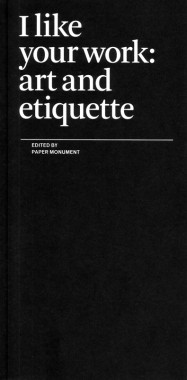
Paper Monument, I like your work: art and etiquette
Softcover, 56 pp., offset 1/1, 4.25 x 8.5 inches
Second edition
ISBN 978-0-9797575-2-5
Published by Paper Monument
$8.00 · out of stock
Paper Monument publishes its first pamphlet,
I like your work: art and etiquette, with contributions from 38 artists, critics, curators, and dealers on the sometimes serious and sometimes ridiculous topic of manners in the art world.
The art world is now both socially professional and professionally social. Curators visit artists’ studios; collectors, dealers, and journalists assemble for a reception and reconvene later for dinner; everyone goes to parties. We exchange introductions and small talk; art is bought and sold; careers (and friendships) brighten or fade. In each situation, certain behaviors are expected while others are silently discouraged. Sometimes, what’s appropriate in the real world would be catastrophic in the art world, and vice versa.
Making these distinctions on the spot can be nerve-wracking and disastrous. So we asked ourselves: What is the place of etiquette in art? How do social mores establish our communities, mediate our critical discussions, and frame our experience of art? If we were to transcribe these unspoken laws, what would they look like? What happens when the rules are broken? Since we didn’t have all the answers, we politely asked our friends for some help.
A.S. Hamrah, Amanda Trager, Andrew Berardini, Angie Keefer, Art, Bob Nickas, Criticism, Culture, Dan Nadel, David Levine, Dike Blair, Distribution, Dushko Petrovich, Ethan Greenbaum, James Bae, Jason Murison, Jay Batlle, Jessica Slaven, Kaspar Pincis, Maria Elena González, Matthew Brannon, Michelle Grabner, n+1, Naomi Fry, Paddy Johnson, Pam Lins, Paper Monument, Prem Krishnamurthy, Project Projects, Rachel Uffner, Richard Ryan, Roger White, Ryan Steadman, Sara Greenberger Rafferty, Sari Carel, Steffani Jemison, Theory, Typography, Wendy Olsoff
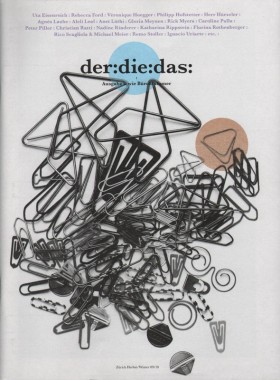
der:die:das:, Issue b like büroklammer (paperclip)
Softcover, 96 pp., offset 4/4, 200 x 270 mm
English and German
Edition of 1000
ISSN 1663-2508
Published by der:die:das:
$22.00 ·
Some words on, and images of, the büroklammer (paperclip).
Art, Büroklammer, Caroline Palla, Christian Ratti, der:die:das:, Distribution, Flurina Rothenberger, Hin Van Tran, Ignacio Uriarte, Katharina Rippstein, Michael Meier, Nadja Aebi, Paperclip, Peter Piller, Photography, Rebecca Ford, Remo Stoller, Ricky Myers, Rico Scagliola, Uta Eisenreich, Veronique Hoegger
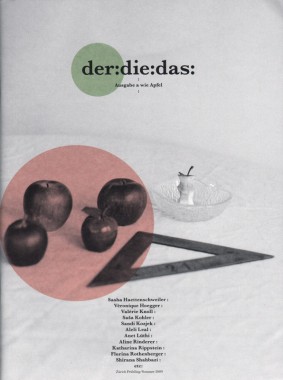
der:die:das:, Issue a for apple
Softcover, 96 pp., offset 4/4, 200 x 270 mm
English and German
Edition of 1000
ISSN 1663-2508
Published by der:die:das:
$22.00 ·
Some words on, and images of, the apple.
Alexander Palacios, Apple, Art, der:die:das:, Desiree Good, Distribution, Flurina Rothenberger, Hin Van Tran, Jon Bischoff, Katharina Rippstein, Nadja Aebi, Photography, Sandi Kozjek, Sasa Kohler, Sasha Haettenschweiler, Shirana Shahbazi, Veronique Hoegger, Wolfgang Tillmans
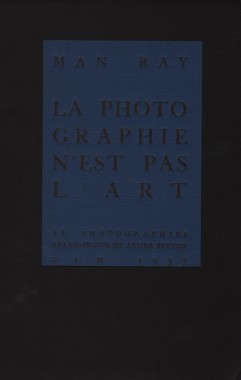
Man Ray, La Photographie N’Est Pas L’Art
Softcover, 64 pp., offset 4/1, 160 x 245 mm
Edition of 1000
ISBN 978-3-902675-30-9
Published by Fotohof Editions
$39.00 ·
Photography is not art, proclaims Man Ray in the essay re-published here as an impeccable facsimile edition of the 1937 original. A pamphlet of loose sheets and 12 images, this publication re-visits an issue that was hotly controversial during the first half of the 20th century — Is Photography Art? — as examined in the influential Paris magazine L’Art. Despite the fact that Man Ray’s provocative works were among the photographs generally agreed by critics to be, in fact, art, Man Ray himself seems barely interested in considering the question. “There’s no point trying to find out if it’s an art,” he said. “Art is a thing of the past. We need something else. You’ve got to watch light at work. It’s light that creates. I sit down in front of my sheet of photographic paper and I think.”
Art, Fotohof Editions, Man Ray, Photography, RAM
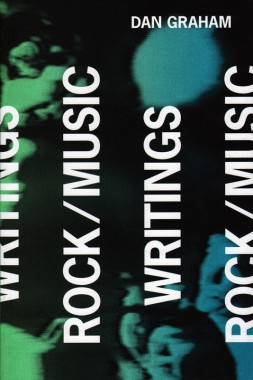
Dan Graham, Rock/Music Writings
Softcover, 224 pp., offset 4/1, 5.5 x 8.25 inches
Edition of 3000
ISBN 978-0978869-73-1
Published by Primary Information
$18.00 ·
As admired for his writing as for his work in art, photography and architecture, Dan Graham was one of the first contemporary artists to embrace Punk, Postpunk and No Wave, becoming a figurehead for those movements, and an early supporter of (and friend to) Glenn Branca and Sonic Youth among many others. Rock/Music Writings collects 13 of Graham’s most influential writings, on bands ranging from The Kinks to Bow Wow Wow, first published in art journals such as Real Life, Open Letter and ZG between 1968 and 1988, and in the now rare volume Rock My Religion. It includes such landmark essays as “Punk as Propaganda,” which explicates the self-packaging and media critique of The Ramones, Devo, the Sex Pistols, the Desperate Bicycles and others; “Rock My Religion,” in which Graham traces themes of ecstatic reverie in rock performance (with a focus on Patti Smith), through a beautiful composite of quotation, commentary and photography; and “New Wave Rock and the Feminine,” which discusses the onstage personae of Lydia Lunch, Debbie Harry and Siouxsie Sioux, and the gender politics of all-female groups such as The Slits, The Raincoats, Bush Tetras and others. Throughout Rock/Music Writings, Graham’s appraisals are clear-eyed, sophisticated and poetically constructed, a genre of their own within artists’ writings.
Art, Culture, Dan Graham, DAP, Debbie Harry, Glenn Branca, Lydia Lunch, Music, Primary Information
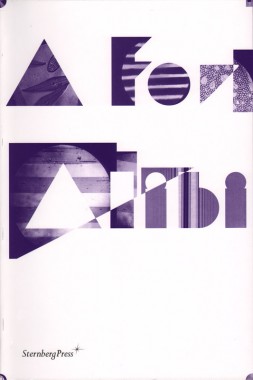
Mariana Castillo Deball and Irene Kopelman, A for Alibi
Softcover + dust jacket, 240 pp., offset 2/2, 160 x 240 mm
Edition of 1000
ISBN 978-1-933128-33-7
Published by Sternberg Press
$29.00 ·
A for Alibi explores the boundaries of scientific practice and art. The Uqbar Foundation invited a group of artists to perform research and develop projects using the impressive collection of historical instruments and optical devices. Fully illustrated, this book documents the artists’ projects as well as a symposium of the same name, where scientists and art historians lectured on the origins of modern visual culture.
Brian O’Connell, Irene Kopelman, James Beckett, Manuel Raeder, Maria Barnas, Mariana Castillo Deball, RAM, Sebastian Diaz Morales, Sternberg Press, Suchan Kinoshita, Tiemen Cocquyt, Tine Melzer, Uqbar Foundation

Dexter Sinister, Portable Document Format
Hardcover, 200 pp., offset 4/1, 4.25 x 6.75 inches
Edition of 1000
ISBN 978-1-933128-85-6
Published by Sternberg Press
$20.00 ·
Over the past few years, Dexter Sinister has been interested in exploring contemporary publishing in its broadest, most exploded sense. The first part of this book consists of pieces of writings written since the conception of their New York basement workshop and bookstore in the summer of 2006. These writings were previously published online as PDFs in the Library at www.dextersinister.org. They were primarily written by Dexter Sinister or by one of a circle of regular collaborators, often for their house journal
Dot Dot Dot, or as supplements to other books or exhibitions.
The second part consists of reproductions of a series of lithographic proof prints. Accompanying these prints are extended captions individually produced for different exhibitions in 2008. Each caption was composed in line with the manner of its accompanying image. Although never intended as a set, a number of generic themes emerged, such as abstraction, mathematics, logic, and cooperation. The book intends to demonstrate how ideas from the first part have been rechannelled in the second.
Anthony Huberman, David Reinfurt, David Senior, Dexter Sinister, Edgar Allan Poe, Giles Weaver, Louis Kaplan, RAM, Rob Giampietro, Seth Price, Sternberg Press, Stuart Bailey, Walead Beshty












